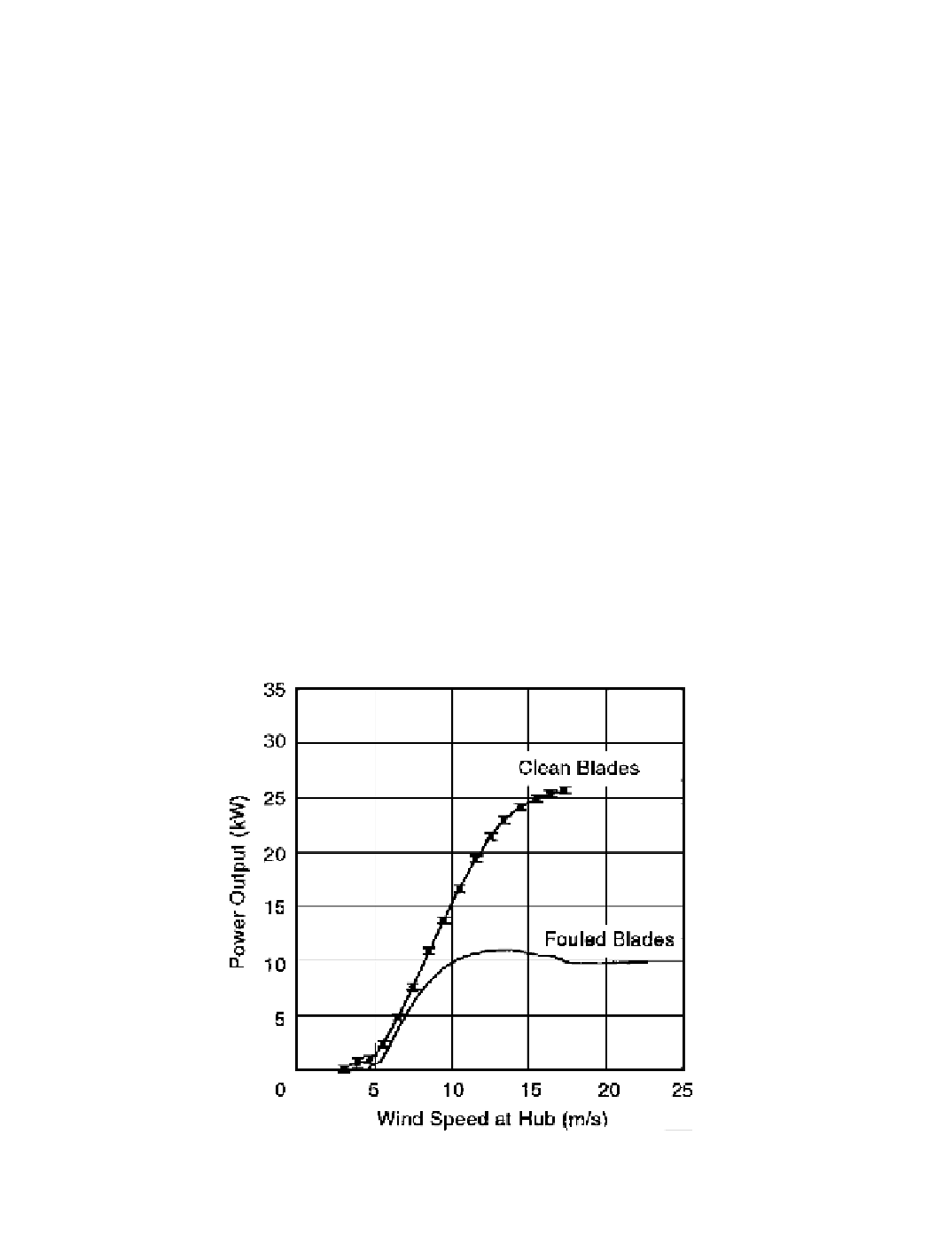Environmental Engineering Reference
In-Depth Information
is not of the same importance as it is for aircraft wing design. General analysis of rotor
performance shows that the primary factor is the product of the chord and the lift
coefficient, or
cC
L
.
Thus, when other characteristics like tip-speed ratio and diameter are
held constant, operating at a higher lift coefficient will permit the use of narrower blades.
Generally, this will not result in lower viscous power losses, since viscous torque is
controlled more by the L/D ratio of the airfoil than the actual value of lift.
The principal factor controlling the lift-to-drag ratio of a given airfoil section is the
Reynolds number. Since a smaller chord reduces Reynolds number in accordance with
Equation 6-1, this is an aerodynamic reason to avoid narrow-chord blades. Another factor
relating to the use of narrower blades is the negative effect on structural stiffness, which
reduces rapidly as thickness decreases. Stiffness is approximately proportional to the square
or the cube of the thickness, and thickness is proportional to the chord.
Drag coefficient is of limited importance in determining turbine performance in the
usual operating range of wind speeds and at normal tip-speed ratios. Generally, its effect
on the power coefficient varies directly with the cube of the tip-speed ratio. When this ratio
is high (in excess of 10, typically) the drag coefficient does become somewhat more
significant. This situation occurs in lower wind ranges when it may be more important to
maximize energy extraction.
Surface Roughness Effects
An important operating requirement that relates to a wind turbine airfoil is its ability
to perform when the smoothness of its surfaces has been degraded by dust, dirt, rain, or
insect debris. Field experience with small- and medium-scale units has indicated that very
severe performance degradation can occur in these circumstances. Figure 6-5 shows field
test power curves for a small-scale (10-m dia.) HAWT with both clean and dirty blades.
It appears that this deleterious effect is most pronounced in fixed-pitch stall-controlled
Figure 6-5. Effect of blade fouling by dust, dirt, and insects on the performance of a
small-scale HAWT 10-m in diameter.

Search WWH ::

Custom Search